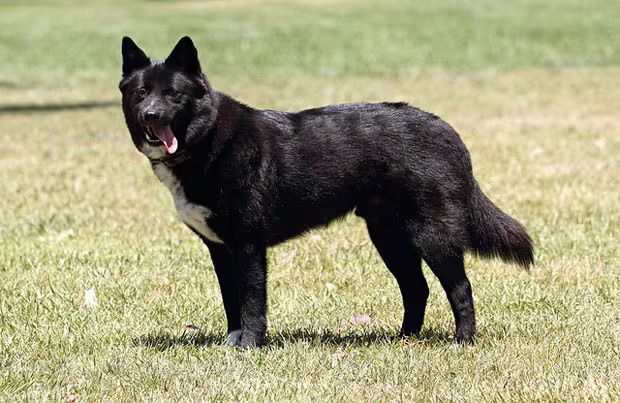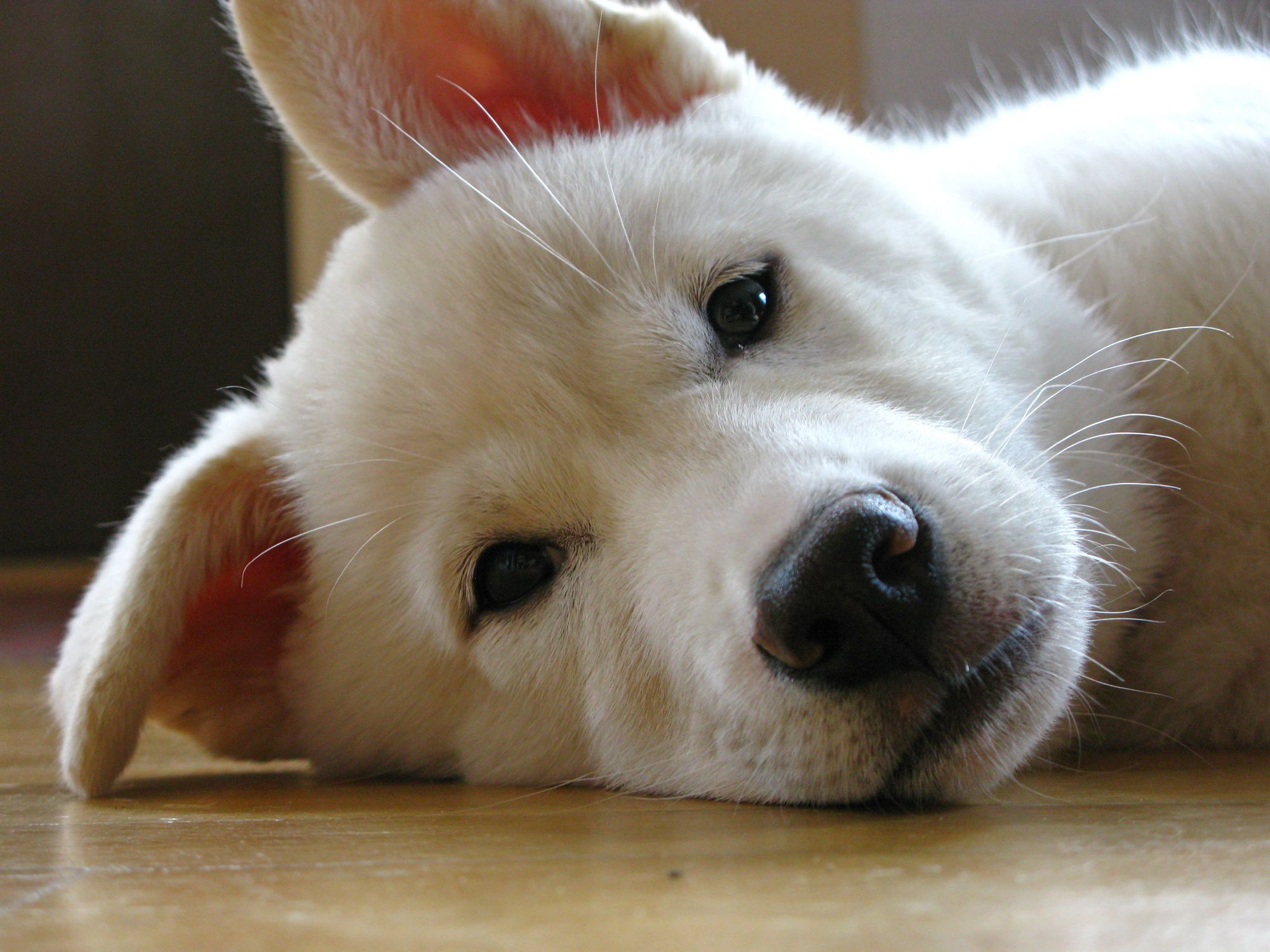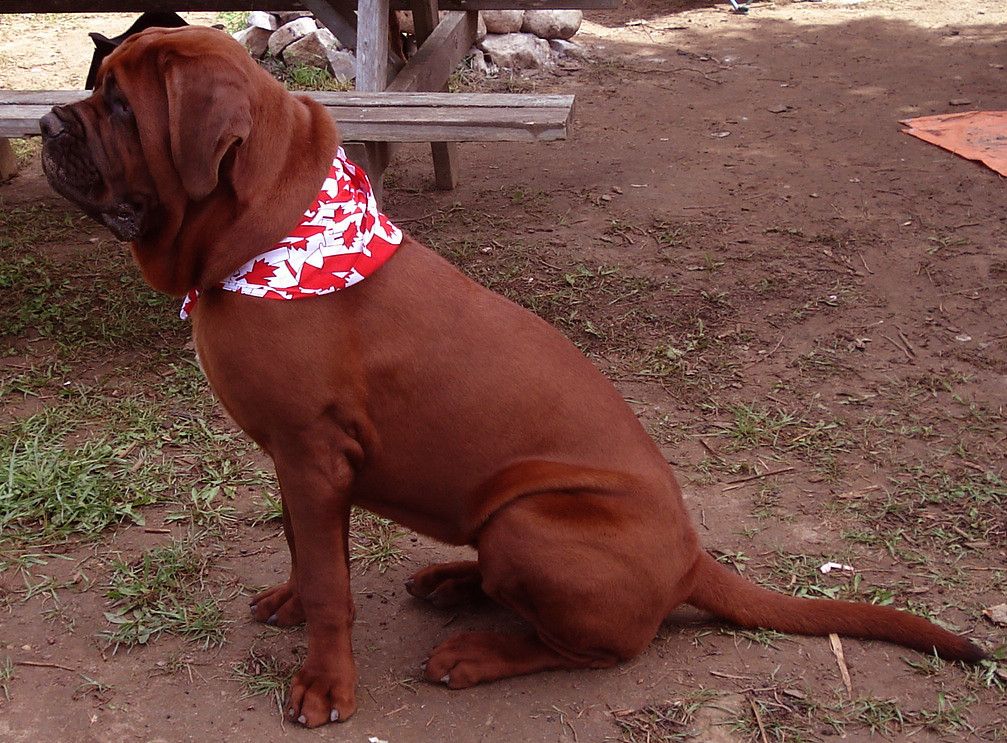Korean dogs have a rich history and a special place in the hearts of their owners. From ancient times to the present day, these canine companions have played significant roles in Korean culture, ranging from loyal companions to skilled hunters and guardians. This article explores the diverse breeds of Korean dogs, their unique characteristics, and their contributions to Korean society.

The History of Korean Dogs
Korean dogs have been an integral part of Korean society for thousands of years. The origins of Korean dogs can be traced back to ancient times when they were domesticated for various purposes. These dogs were highly valued and selectively bred to develop specific traits suitable for different tasks.
Popular Korean Dogs
The Jindo Dog: A National Treasure
The Jindo dog, named after the Jindo Island in South Korea, is considered a national treasure. Known for its loyalty, intelligence, and agility, the Jindo dog is a popular choice among Korean dog enthusiasts. It's striking appearance and strong prey drive make it an excellent hunting companion.
The Pungsan Dog: An Agile and Loyal Companion
The Pungsan dog, originating from the Pungsan region in North Korea, is renowned for its loyalty and agility. This breed was historically used for hunting and guarding, thanks to its exceptional tracking and scenting abilities. Today, the Pungsan dog is cherished as a loving and protective family pet.

The Sapsaree: Guardian of the Home
The Sapsaree is a traditional Korean breed known for its role as a guardian of the home. With its distinctive long, flowing coat and gentle demeanor, the Sapsaree is both an aesthetically pleasing and loyal companion. This breed is highly regarded for its protective nature and is often found in Korean folklore and mythology.
The Korean Mastiff: A Gentle Giant
The Korean Mastiff, also known as the Dosa Mastiff, is a majestic and powerful breed. With its imposing size and calm temperament, the Korean Mastiff makes an excellent family pet and guard dog. Despite its imposing appearance, this breed is known for its gentle nature and affectionate personality.
The Poongsan Dog: Elite Military Breed
The Poongsan dog is an elite military breed developed in South Korea. This highly intelligent and trainable happy dog is often employed by the military and police forces for various roles, including detection work and search and rescue missions. The Poongsan dog's exceptional work ethic and versatility make it a valuable asset in demanding situations.
The Jeju Dog: A Resilient Island Breed
The Jeju dog, native to Jeju Island in South Korea, is a resilient and hardy breed. This dog has adapted to the island's rugged terrain and harsh climate, resulting in a robust and tenacious companion. The Jeju dog's loyalty, intelligence, and agility make it well-suited for a variety of tasks, from hunting to search and rescue operations.
The Nureongi: A Traditional Farm Dog
The Nureongi, also known as the Korean Jindo Mix, is a traditional farm dog commonly found in rural areas of Korea. While not a recognized breed, the Nureongi is cherished for its loyalty, intelligence, and versatility. This breed's working abilities and adaptability have made it a trusted companion for farmers throughout Korean history.
Korean Dog Culture in Festivals
Dogs hold a special place in Korean culture, where they are considered loyal companions, protectors, and symbols of good fortune. Throughout history, good family dogs have played significant roles in Korean society, from guarding homes and farms to hunting alongside their human counterparts. Dogs are cherished family members, and their well-being is highly valued.

Korea celebrates its deep connection with dogs through various vibrant and joyous festivals. These festivals not only showcase the beauty and uniqueness of Korean dog breeds but also promote awareness of responsible pet ownership and animal welfare. Let's explore some of the most popular dog festivals in Korea:
1. Bongguk Festival: This annual festival, held in Seoul, honors dogs and promotes their welfare. Visitors can enjoy dog parades, agility competitions, and exhibitions showcasing different breeds. The festival aims to raise awareness about responsible dog ownership and adoption.
2. Jindo Miracle Sea Road Festival: Celebrated on Jindo Island, the birthplace of the Jindo breed, this festival pays homage to the Jindo dogs and their incredible swimming abilities. The highlight of the festival is the "Jindo Sea Parting," where a path emerges from the sea during low tide, allowing visitors and their dogs to walk between two islands.
3. Nanhae Dog Market Festival: Located in Busan, this festival is a hub for dog enthusiasts. Visitors can explore a wide range of dog-related products, attend dog grooming demonstrations, and even participate in dog beauty contests. The festival aims to promote the well-being and care of dogs.
4. Daegu Yangnyeongsi Herb Medicine Festival: While not solely focused on dogs, this festival highlights the role of dogs in traditional Korean medicine. Visitors can learn about herbal remedies and therapies involving dogs, as well as witness impressive dog performances.
These festivals provide an opportunity for dog lovers to gather, appreciate Korean dog breeds, and learn about their significance in Korean culture. They are also a platform to educate the public about responsible dog ownership, adoption, and animal welfare.
Training and Care for Korean Dogs
Training is an essential aspect of owning a Korean dog. Regardless of the breed, early socialization and obedience training are crucial for their well-being and the harmony of their interactions with humans and other animals. Here are some training tips for Korean dogs:
1. Start Early: Begin training your Korean dog as soon as you bring them home. Early socialization helps them become comfortable and well-adjusted in various environments.
2. Positive Reinforcement: Use positive reinforcement techniques, such as treats, praise, and play, to reward desired behaviors. This approach motivates Korean dogs and strengthens the bond between you and your furry friend.
3. Consistency and Patience: Consistency is key when training Korean dogs. Establish clear rules and boundaries, and reinforce them consistently. Patience is also crucial, as different dogs learn at their own pace.
4. Basic Commands: Teach basic commands like "sit," "stay," "come," and "heel." These commands provide structure and ensure your dog's safety in different situations.
5. Leash Training: Leash training is essential for Korean dogs, especially those with a strong prey drive or hunting instincts. Train them to walk calmly on a leash and respond to leash cues.

Care for Korean Dogs
Proper care is vital to keep your Korean dog healthy and happy. Here are some care tips for Korean dogs:
1. Nutrition: Provide a balanced diet appropriate for your dog's age, size, and activity level. Consult with a veterinarian to determine the best food options for your Korean dog.
2. Regular Exercise: Korean dogs, like any other breed, require regular exercise to maintain their physical and mental well-being. Provide daily walks, playtime, and mental stimulation activities.
3. Grooming: Different Korean dog breeds have varying grooming needs. Some may require regular brushing to prevent matting, while others may need professional grooming services. Research the grooming requirements of your specific breed and establish a grooming routine accordingly.
4. Veterinary Care: Schedule regular veterinary check-ups to monitor your dog's health, administer necessary vaccinations, and address any potential health concerns. Regular grooming also includes dental care, such as brushing your dog's teeth and providing interactive puzzle toys or dental treats.
5. Safe Environment: Ensure a safe environment for your Korean dog. Dog-proof your home, secure fencing in your yard, and provide suitable shelter and protection from extreme weather conditions.
By implementing proper training techniques and providing adequate care, you can create a loving and supportive environment for your Korean dog, promoting their well-being and strengthening your bond.
Korean Dogs in Popular Culture
Korean dogs have not only made an impact on the lives of individuals and families but have also become prominent in various aspects of Korean popular culture. They have been featured in literature, films, television shows, and even as mascots for events and organizations. The unique traits and historical significance of Korean dog breeds have added a touch of charm and cultural symbolism to these creative expressions. Here are some examples of Korean dogs in popular culture:
1. Literature: Korean dog breeds, such as the Jindo and Pungsan dogs, have been prominently featured in Korean literature, symbolizing loyalty, bravery, and the indomitable spirit of Koreans.
2. Films and Television: Korean movies and TV shows have showcased the loyalty, intelligence, and companionship of Korean dogs. These portrayals have helped raise awareness and appreciation for Korean dog breeds both domestically and internationally.
3. Mascots: Korean dog breeds have been chosen as mascots for various events and organizations, representing the unique cultural identity and heritage of Korea. These mascots often embody qualities like loyalty, strength, and protection. Korean dogs' presence in popular culture has contributed to their recognition and appreciation, highlighting their special place in Korean society and further solidifying their status as national treasures.
The Future of Korean Dogs
Korean dogs have a bright future ahead, both in Korea and globally. Efforts are being made to preserve and promote these unique breeds, ensuring their continued existence and well-being. Here are some factors that shape the future of Korean dogs:
1. Breed Preservation: Organizations and breeders in Korea are dedicated to preserving and maintaining the purity of Korean dog breeds. Through responsible breeding practices and education, they aim to protect the distinct characteristics and genetic heritage of these dogs.
2. International Recognition: Korean dog breeds are gaining international recognition and appreciation. As more people learn about their history, traits, and cultural significance, the demand for Korean dogs as pets and companions is growing worldwide.
3. Responsible Ownership: The importance of responsible dog ownership is being emphasized, including proper training, care, and socialization. By promoting responsible ownership practices, Korean dogs can thrive in various environments and continue to forge strong bonds with their human companions.
4. Research and Development: Ongoing research and development efforts are focused on understanding the unique traits and health conditions of Korean dogs. This knowledge contributes to their overall well-being, genetic diversity, and potential advancements in veterinary medicine.

The future of Korean dogs looks promising, with increased awareness, preservation efforts, and responsible ownership practices. As these magnificent breeds continue to captivate the hearts of people worldwide, their legacy as national treasures will be carried forward for generations to come.
Conclusion
Korean dogs embody the rich history and cultural heritage of Korea. From the loyal Jindo dog to the protective Sapsaree and the versatile Poongsan dog, each breed offers unique qualities and contributions to Korean society. By understanding and appreciating these fascinating canines, we can ensure their legacy lives on for generations to come.
FAQs (Frequently Asked Questions)
1. Are Korean dogs suitable for families with children?
Absolutely! Many Korean dog breeds, such as the Jindo dog and Pungsan dog, are known for their affectionate and gentle nature, making them great companions for families with children.
2. Do Korean dogs require a lot of exercises?
While exercise requirements vary between breeds, most Korean dogs benefit from regular exercise to keep them mentally and physically stimulated. Daily walks and playtime are generally recommended.
3. Are Korean dogs hypoallergenic?
No, Korean dogs are not generally considered hypoallergenic. Some breeds, such as the Sapsaree, have long coats that require regular grooming to minimize seasonal shedding and potential allergens.
4. Can Korean dogs adapt to apartment living?
Yes, certain Korean dog breeds, like the Jindo dog and Jeju dog, can adapt well to apartment living if provided with sufficient exercise and mental stimulation. However, it's necessary to consider each breed's specific needs and consult with a reputable breeder or veterinarian.
5. How can I support the well-being of Korean dogs?
You can support the well-being of Korean dogs by raising awareness about responsible breeding practices, promoting adoption from reputable shelters and rescues, and supporting organizations dedicated to their conservation and welfare.
6. How can I adopt a Korean dog outside of Korea?
There are various international adoption organizations and agencies that specialize in rehoming Korean dogs. Research reputable organizations and follow their adoption procedures. Keep in mind that there may be certain requirements and processes involved, such as home checks and transportation arrangements.
7. What is the average lifespan of Korean dogs?
The average lifespan of Korean dogs can vary depending on the breed. Generally, it ranges from 10 to 15 years, but some breeds may live longer with proper care and nutrition. Regular veterinary check-ups, a balanced diet, exercise, and a loving environment can contribute to a dog's overall health and lifespan.
8. Can Korean dogs be trained easily?
Korean dogs are generally intelligent and trainable. However, like any other breed, training success depends on consistency, positive reinforcement, and understanding the individual needs and characteristics of the specific breed. Some Korean dog breeds may have a strong independent streak or exhibit certain breed-specific traits that require specific training approaches. Seeking professional guidance or attending obedience classes can be beneficial in ensuring successful training outcomes.

